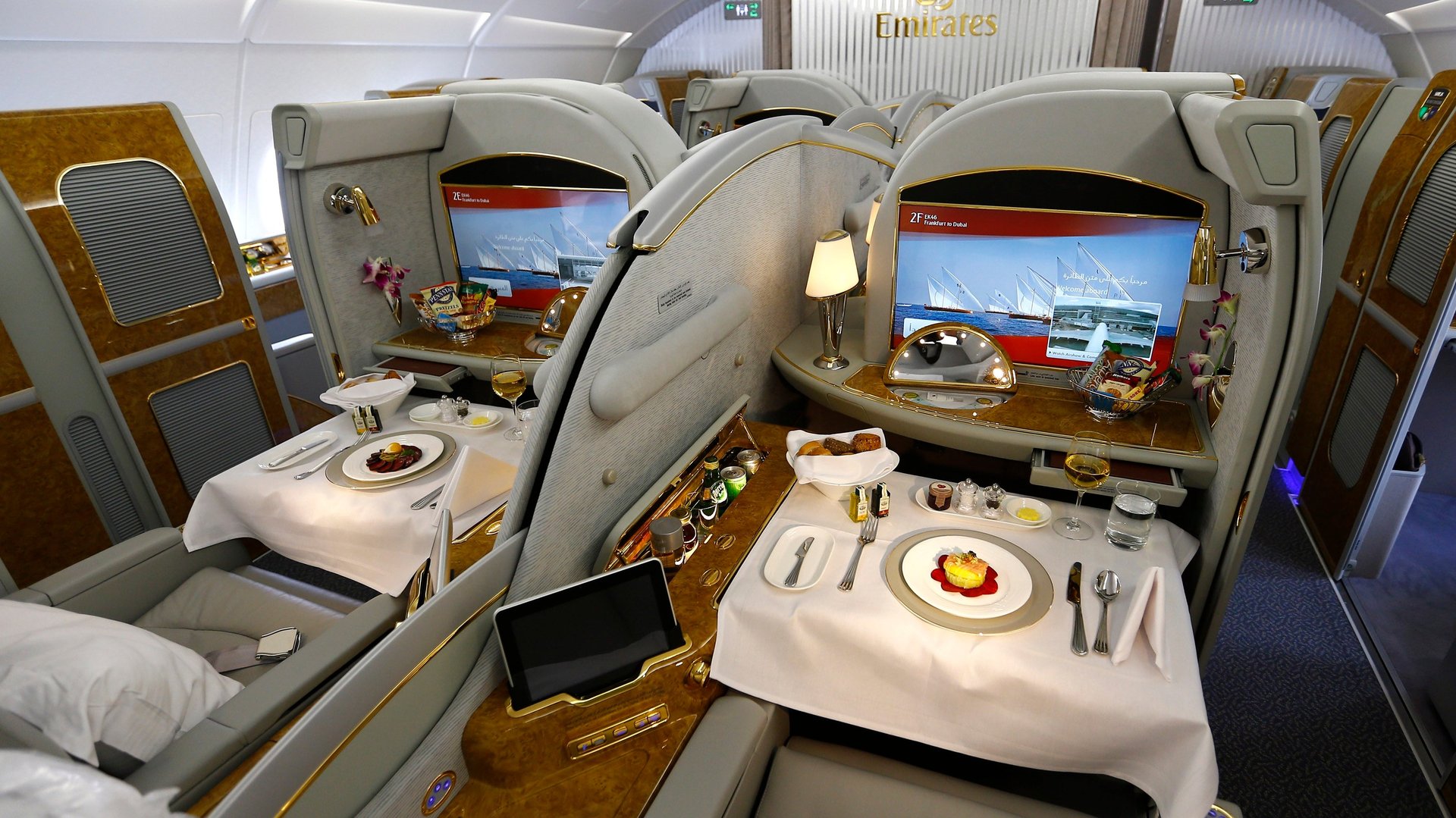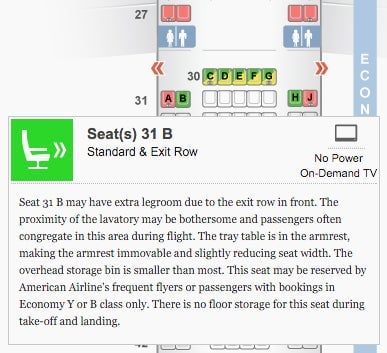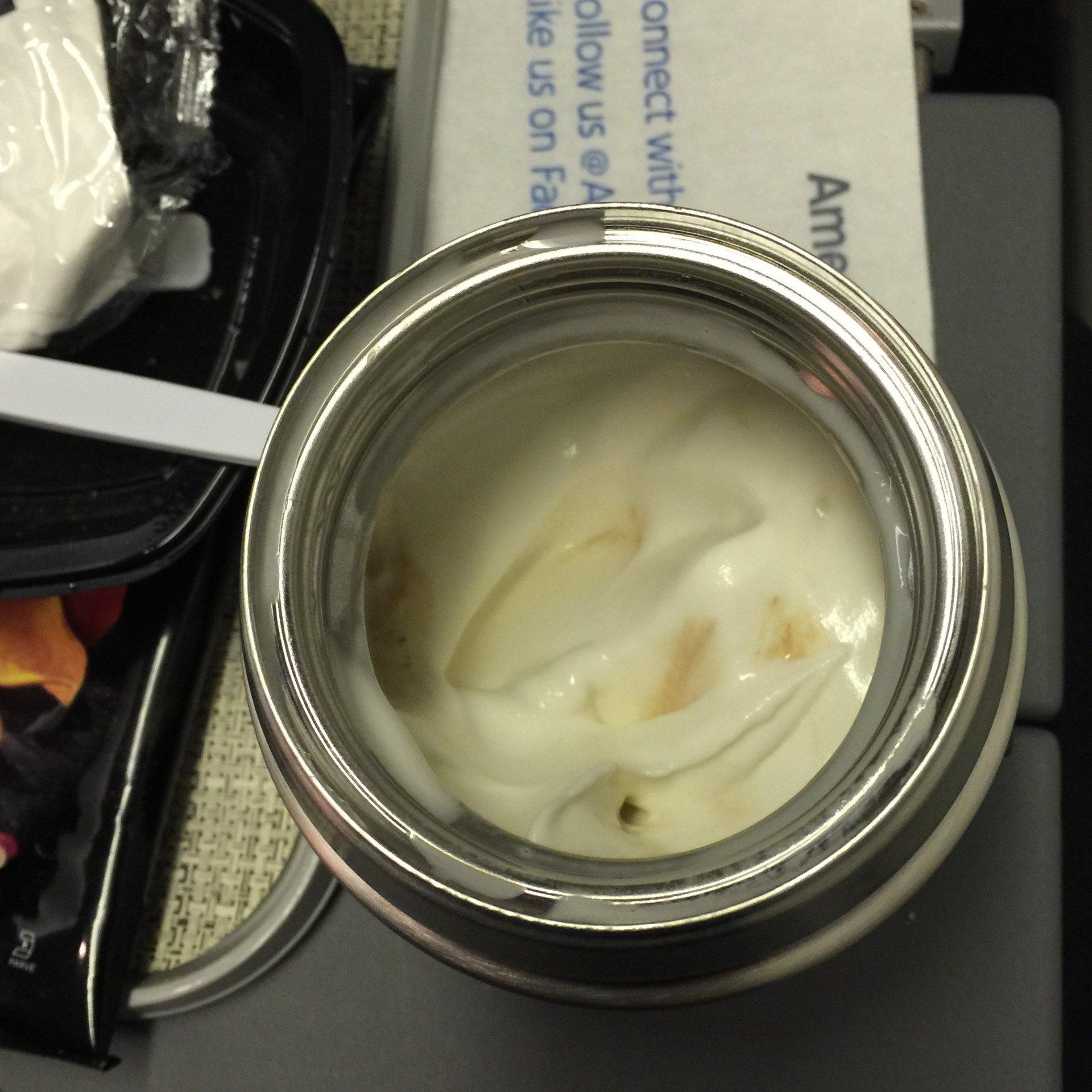The complete guide to faking your own business-class upgrade
Flying business class on long flights has never been nicer, often featuring lie-flat seat-beds, large TVs, champagne, fancy meals, Japanese bidet toilets, and walk-up snack bars. Meanwhile, passengers in economy class are getting squeezed—literally, often 10 per row, in narrow seats with knee-crunching legroom and lousy food.


Flying business class on long flights has never been nicer, often featuring lie-flat seat-beds, large TVs, champagne, fancy meals, Japanese bidet toilets, and walk-up snack bars. Meanwhile, passengers in economy class are getting squeezed—literally, often 10 per row, in narrow seats with knee-crunching legroom and lousy food.
But you don’t have to be miserable when you fly. With a little planning, ingenuity, and luck, you can significantly improve your seat, meal, in-flight environment, and enjoyment. Here’s how.
Pick the best economy seat you can.
If I’m flying overnight or longer, my priority is legroom—space to stretch out, get up, and see something other than the seat in front of me. Most big planes have a few extra-special coach seats with what seems like unlimited legroom.
To find the best seats on any plane, the website you want is SeatGuru, which offers seating charts and quality ratings for seats on hundreds of different airlines and plane configurations. This includes whether a seat has a surplus (or shortage) of legroom, is missing a window, is unusually loud, has a power outlet, and any other quirks.

My all-time favorite economy-class seat is 31B on American Airlines’ 777-200 aircraft, which it flies on many long-haul trips. (There’s also 31H on the other side of the plane.) While the aisle seat is close to an exit door and lavatory, it features virtually unlimited legroom. At night, I’ve been able to set my carry-on bag in front of me as a footrest, which is more relaxing and helps me sleep. It’s a great seat and people stare with envy.
Finding the best seat on your flight can be confusing, as airlines sometimes have different configurations for the same type of airplane. For example, on a newer version of American’s 777-200, 31B is a middle seat in the back. There’s also the bigger issue of getting access to the seat you want. Some seats are reserved for elite-status fliers until 24 hours before departure, or have similar rules. Other times, they’re only available for an upcharge.
Some airlines also offer “economy comfort” or “main cabin extra” seating—a standard economy seat with more legroom—for a modest fee. Others might sell you a discounted upgrade to premium economy—a different class of the airplane, with more luxurious seating and dining—or even to business class, at check-in. On a recent flight from New York to Tokyo, I was able to upgrade at the check-in counter to JAL’s premium economy for $300—a lot cheaper than if I had booked it outright. On a long flight, this could be a good investment, especially if someone else (your employer, for instance) is paying for your base ticket.
When in doubt, ask politely. Airline employees, even on Twitter, sometimes have a surprising amount of power. And keep trying: The hours and minutes before your flight are often the best time to nab a great seat.
Upgrade your environment.
Once your seat is set, think about what you can do to make the act of flying more comfortable. For me, that means noise-canceling headphones, the right clothing, and an excellent entertainment system.
Perhaps the best $300 I’ve spent on travel gear is for a pair of noise-canceling headphones, the Bose QuietComfort 25, which is also recommended by The Wirecutter. They’re decent headphones for music and movies, but what’s really impressive is the amount of cabin noise they reduce. I find it easier to sleep, read, understand movie dialogue. And it’s just generally more relaxing and pleasant when I have them on. As a bonus, they also keep your ears warm when the airplane cabin is chilly.
On travel days, I layer my clothing so I can adjust what I’m wearing if the cabin air is too warm or cold. If you’re in first class, you might be treated to pajamas, compression socks, and slippers. Not the case in seat 31B.
For super-long flights, I bring an extra pair of sweatpants, merino wool socks, and slippers to change into after we’re in the air. A lightweight down jacket, such as Patagonia’s down sweater (also for women), is an excellent long-haul layer when you won’t get an airline duvet. I stop short of bringing my own pillow or blanket; that’s dead weight the rest of the trip.
While seat-back entertainment systems have improved—and sometimes offer hundreds or thousands of video titles—I always bring my own, too. Most flights, that’s my MacBook laptop, loaded up with TV shows and movie rentals from iTunes, which can be played offline. I also bring an iPad mini stocked with e-books, the last few issues of the New Yorker, and web articles saved to read offline via the Instapaper app. When there’s in-flight internet access powered by Gogo, it’s a good idea to save money by pre-buying a day pass. A distracted flier is a happy flier.
Enhance your meals.
While business-class meals are more refined and expensive than economy-class meals, they’re still airplane food. One way to have the guaranteed best meal on the plane is to spend $15 before you board on real food that will travel well—a sandwich, salad bowl, tacos, burrito, etc.—and eat that at mealtime. (Note the common-sense, good-neighbor ban on tuna sandwiches and salads.)
If you must eat plane food, disguise it with a packet or two of hot sauce. I bring Cholula hot sauce packets, stashed from a local take-out restaurant. You can now order sriracha packets online. I usually avoid alcohol while flying, but shaking your plastic bottle of cheap airplane wine will help make it taste better—there’s a Quartz guide for that, too.
The best part of the business-class meal, of course, is the ice cream sundae. What’s more luxurious than a frozen dessert in the sky?

So on a flight to Paris last year, I decided to try to simulate the experience. I brought a small, empty thermos to the airport, and after passing through security, searched the terminal for ice cream. My best bet: A chocolate sundae from McDonald’s, which was also the least expensive option. I plopped it into my thermos and then my carry-on.
A few hours later, after my hot-sauce-doused chicken and quinoa dinner, I treated myself to ice cream over the Atlantic. It was still mostly frozen—and entirely delicious.